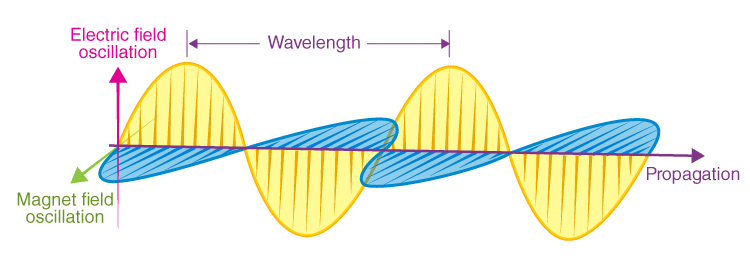
I've become interested in polarised light. In a way it's
simple. Light comes in waves, the angle of the waves (e.g. waves on a
lake are horizontal vertical) is called the polarisation. Polarised lenses for
photographers or your sunglasses have strings of molecules that
prevent, e.g. horizontal light getting through.
But this just raises a bunch of questions. How exactly do those filters work? Tiny slits? How does it work when light comes at an odd angle? From where does polarised light emanate? Horizontal surfaces? The sun?
I've found answers to questions, but not all of them. I'm nowhere near to understanding circular polarisation.
If you have a vertical polarisation filter (side note: I get this
vertical and horizontal mixed up) and a horizontal one behind that, no
light would get through.
So what if you added another filter, at 45
degrees, between those two? Surely you can't add light by
adding another filter. That is the three polariser experiment.
I got all excited about this and got ready to prepare a lesson
(more for the dad, who teaches photography).
Waves change polarisation by impossible-to-explain crazy quantum magic
when going through the filters. I found out just yesterday
this is wrong. Much of it can be explained logically. Although there is
still some quantum magic with photons.
Here are a couple of brief YouTube shorts that show what
polarised sunglasses do.
Sometimes these lenses are called polarisation filters. Sometimes they are called polarisers. Hmm ..
I have a fake pearl necklace to demonstrate polarisation filters, in preparation for a new lesson. What happens when the polarisation comes in at an odd angle?

As mentioned, I get confused about vertical and horizontal. There
is a variety of reasons for this. I just forget.
There is plane vs. oscillation, like that lake example.
The reflected light wave
oscillates off a horizontal surface in a way that is not intuitive.
Crucially, the models that science communicators use are different,
with the slits being more intuitive, but the molecular layout,
which I will represent with the
pearl necklace, is perpendicular. I sometimes wonder if the science communicators
are confused, which would poison the well.
This is only partly relevant.
Amateur Steve says:
When light hits an atom, an atom is going to do something with it.
It might absorb the light and turn it into heat, although I'm not
entirely clear about that. Alternatively, when light hits an atom, as the video shows,
the electron temporarily goes into a higher-energy electron shell (the video
shows electron clouds),
but a zillionth of a second later
the atom will spit a new photon back out. Do you see that table in your
room?
Light is bouncing off of it, with the process shown in the video.
When light hits glass, it just goes right through. But even there the
atoms are doing something, as you can tell by the way glass and water can do funny
things with light.
A big source of polarised light is light bouncing off a flatish surface,
typically horizontal. I put a mirror on the floor and looked at it through
a polarisation filter. This does not work at all for some reason.
More amusing trivia than useful information.
Polaroid was named after that.
Do you see why I want to use the pearl necklace? Pull the necklace taut. When you strum the necklace like a guitar string it vibrates horizontally. When you strum it vertically nothing happens. When you strum it at an angle you will see A) it vibrates only partly B) it will only vibrate horizontally, not at an angle.
Unpolarised light is light with a bunch of random polarisations, with
no dominant polarisation. It's the typical light you see.
This shows the three polariser experiment, with no explanation.
(Visible) light is a small part of the electromagnetic spectrum, in between ultraviolet and infrared. It's all the same thing, but different frequency. Our brain interprets different wave frequencies as different colours.
Shouldn't light have two waves?

There are indeed two waves, but the electric wave is the one we care about. The electric waves slaps around electrically charged particles.
He provides an explanation of the three polariser experiment. He also teases what's going on with photons.
Another run at it. Some useful numbers. Photon quantum weirdness.
Light is either a (quantum) particle or a wave, depending on how you
look at it. As a number of videos point out, there is quantum weirdness
going on. That is, at best, not straightforward. I say that with waves
there is no magic to it; it can make sense to most people if you sit down
and think about it for a minute. The key fact is that the lenses change
the polarisation. As for what's going on with photons, I'm more or
less not going to address that, partly because I will be giving a lesson
to folks.
The focus of the lesson will be the three polariser experiment, but
we will do this bit of fun at the end.
You need the object between a source of polarised light - an LCD screen, or a polarisation filter - and a perpendicular filter in front of the object. She explains at the end of the video that this is circular polarisation, which is out of scope for me.
If you're going to watch the whole video, please read the part
above about confusing horizontal and vertical.